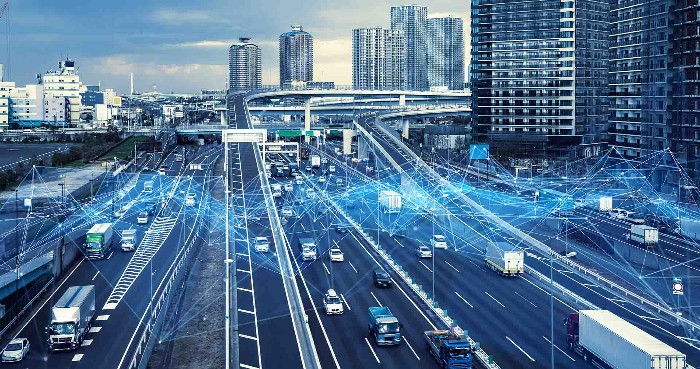WHAT ARE THE CONNECTIVITY REQUIREMENTS FOR AI IN AUTONOMOUS VEHICLES?
AI technology in cars of the future will be present in several ways. ADAS and autonomous vehicles depend on processing a huge amount of data from sensors, whether that’s computer vision from cameras, radar, lidar, thermals, or, very possibly, a combination of both. This will require a performant and robust automotive networking data backbone to ensure the efficient transport of this data around the vehicle.
However, there will also be a requirement for extensive connectivity in and out of the car to increase safety and in car entertainment. This will require the widespread availability of 5G communications, which is currently being rolled out across the world. Some estimate that self-driving cars will send up to 25GB of data to the cloud every hour. However, taking completely the opposite tack, other companies looking to build their autonomous cars without needing to be continually connected to the internet, in order to reduce the possibility of hacking.
However, most smart systems will rely on vehicle connectivity. This will enable technologies such as vehicle-to-infrastructure (V2I) and vehicle-to-vehicle (V2V), will play a huge role.
Connectivity for safety
With vehicle to infrastructure, the city itself becomes smart – things such as traffic lights, and lampposts, and overhead bridges help create “smart roads”. We’ve all been driving on the motorway, pass an exit ramp and turn a bend to find ourselves we are hitting a huge traffic jam. Current navigation systems require crowd-sourced data into sat-nav apps, but these won’t cut it in a world of autonomous cars. The data must be unlocked from app and sent to wider systems so all cars can be made aware, and act appropriately, be it the driver of the car itself.

In an example from Finland, V2X systems alert approaching cars when pedestrians are crossing the road ahead, improving safety.
The say sharing is caring and vehicle-to-vehicle (V2V) communication, backed by the cloud, will enable cars to communicate directly with each other to provide warnings about the environment ahead, such as a stationary car, so they don’t just have to rely on their own sensors. For example, a car blocking the road might be picked up by a car 50 metres way, but if this information is then identified and shared other cars can know about it much earlier.
(V2V) communication, backed by the cloud, will enable cars to communicate directly with each other to provide warnings about the environment ahead.
This is all AI processing, enhanced by connectivity solutions. These small improvements will help to reduce accidents and fatalities on the roads, benefiting us all, and greatly reducing economic burden of dealing with them.
Cars will also of course rely on external connectivity systems to update themselves over-the-air, much as we are used to with our smartphones.
In summary, AI can be enhanced by external vehicle connectivity, by over-the-air updates and by having the AI models updated as well. Inside the vehicle, the AI needs to be certain that the information that it is receiving is complete and that if anything has failed or stopped working that the AI is aware of it and can make allowances accordingly. This all requires reliable and safe automotive networking in the vehicle to function properly, powerful compute capability and advanced AI design.
Related Articles
Why Data Is Now The Lifeblood of The Car
Related Posts
Beyond HMI and graphics – why GPUs matter for autonomy
Making surround-view for cars smarter and safer
Imagination and Humanising Autonomy Part 1: The path to safer roads
Why we’ve created a safety-critical driver for automotive GPU acceleration
Related News
Imagination Joins Baidu PaddlePaddle “Hardware Ecosystem Co-Creation Program”
Imagination launches RISC-V CPU family
Imagination launches IMG Labs to create breakthrough technologies
